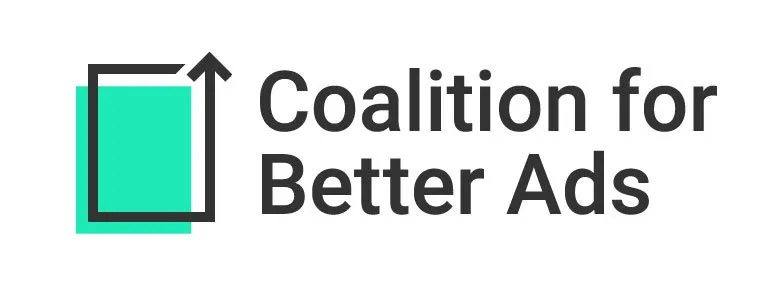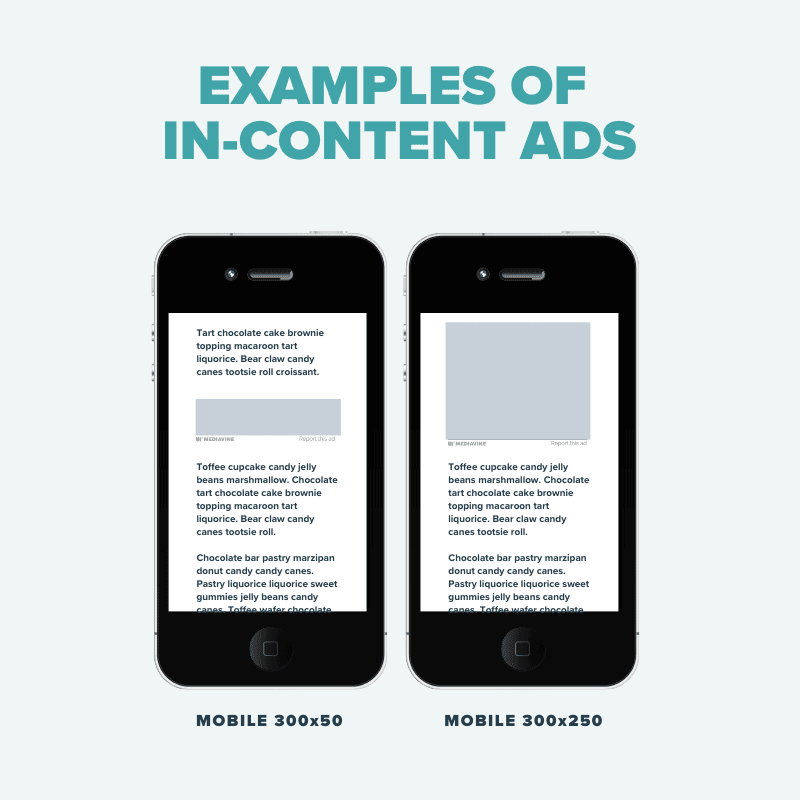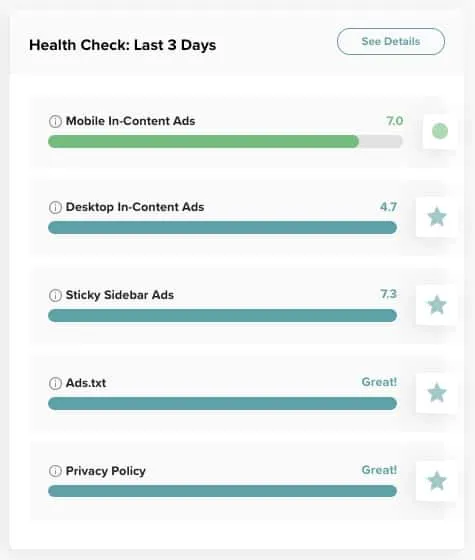How Many Ads Does Mediavine Run?


We’ve gotten a lot of questions lately about the new Coalition for Better Ads in-content logic — how it works, why we changed to offer this new logic, and just how many ads Mediavine publishers are running now. Let’s break it down.
Mediavine is a member of the Coalition for Better Ads as of April 20, 2018. This is a big deal for us — we’re part of a group of internet entities dedicated to making sure that ad quality, and quantity, defer to user experience.
The goal of the CBA is to create better ad experiences so that people aren’t encouraged to install ad blockers. By being committed to quality ads and excellent experiences with them, we’re saying that your reader, and their opinion of your ads, matters most.
That’s not a new concept for Mediavine — that’s been a mission since we decided to start the advertising arm of our company (and why we have Mediavine Ad Reporter). Becoming part of the CBA is a natural fit for us, and a relationship we’re excited about.

There are some pretty big players on the Coalition for Better Ads board — Google, Facebook, and Microsoft, to name a few. They put a lot of money behind conducting studies as to what constitutes good and bad user experience when it comes to ads.
A surprising outcome of that study? Density matters more than quantity.
Think of your Facebook feed. If you keep scrolling, they keep serving you ads. They never run out of them.
When you view your Facebook feed, do you actively count the number of ads you see?
Neither do your readers. To them, it is about the overall experience.
The CBA logic uses this idea to create its spacing — it’s all about the density of ads in relation to your total amount of content. At Mediavine, we keep to a default of 30% ads to 70% content.
This means that rather than relying on an arbitrary number to cap ads at, we rely on the length of your content, just like Facebook does.
If you have a post with an infinite number of pixels? We’ll keep serving ads. But never more than the pixels dictate, always keeping within the 30% density.

The answer to that question is, “it depends” — because not all your posts are exactly the same length. So the number of in-content ads will change per post. Shorter posts will get less ads, and longer posts will get more.
It’s also dependent on what preferences you’ve set around your in-content ads. Less density = less ads.
We’ll say it again — Facebook never runs out of ads, and neither should you. Using the density settings allows you to space things out to your preference while still loading as many ads as your content will allow for.
If you write a really long, detailed tutorial that your readers love and are interacting with all the way to the bottom, do you want to stop monetizing that halfway through? No! We don’t want that for you either.
Our technology makes this possible. Other companies have a set limit simply because it’s what their technology requires. We’ve built forward thinking tech that allows you to take advantage of every bit of your content, from start to finish.
The other aspect of in-content ads that is unique to Mediavine is our use of lazy loading for all ads below the fold.
If a reader doesn’t scroll near where the ad should appear, it doesn’t exist. Not to your site load time, not to your reader, and not to impact your viewability score.
You, as the site owner, probably always scroll from the top of your post to the bottom, and may count the ads that way.
But if a reader has found their way to your viral round up (with enough content for 15 potential ad spots), but clicks away on the 3rd link in the roundup, they only loaded 2-3 ads, not all 15.
We’re the only company that does it this way, and we do it to protect your site speed, your user experience, and your domain’s value to advertisers.
So how many ads are you serving on average? Your health checks will tell you.

The in-content health checks are an average of the number of ads loaded per session.
Keep in mind that the average blogger has about 1.2 pageviews per session. So the numbers in your dashboard should be divided by the number of pageviews your Google Analytics says you have per session. That’s the average number of ads you’re running per pageview.
Yes, some of your posts will have more than 10 ads, if you have super long content. And some will have way less than 5. It all depends on how your content is formatted, and what density settings you have.
The important thing to take away? We will never allow the number of your in-content ads to break that ‘70% content & 30% ads rule,’ even if you’ve chosen the highest density setting available in the Mediavine dashboard.
You will always be in compliance with the Coalition for Better Ads best practices because we make sure of it.
We’ll also continue to provide ways to tone the ad volume down even further, because we know that the balance for every site, and site owner, is different.
If you need any help getting your settings just right, please hit us up in your dashboard or via email. We’re always here to help.
Stay up to date with the latest from Mediavine
Welcome to the much-anticipated release of the fifth-annual edition of “The Best eCPM Days of the Year” calendar. Each year, we analyze historical trends to provide publishers with a graphical …
“Let’s talk about politics.” We know. This is a phrase absolutely no one wants to hear uttered around the dinner table or backyard barbecue these days. But hear us out. …
Ah, July. It’s a glorious month of sand-filled swimsuits, mosquito invasions, broken air conditioners and applying sunscreen only to look like cooked lobsters. It’s also the start of a new …